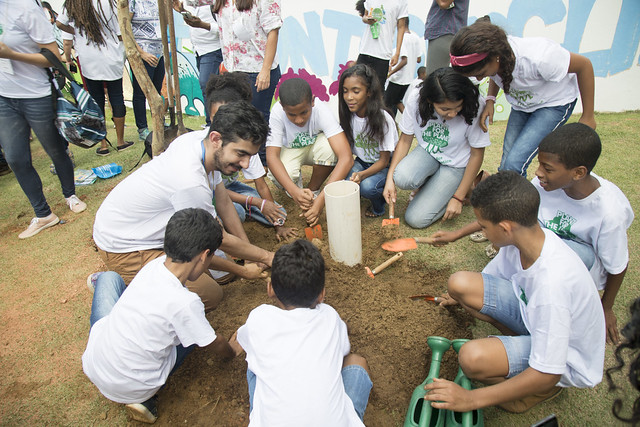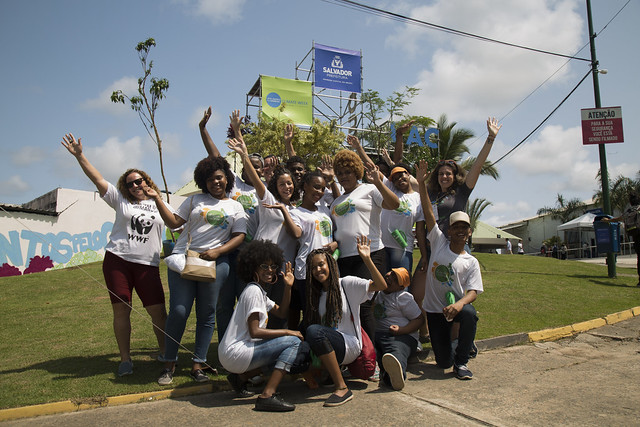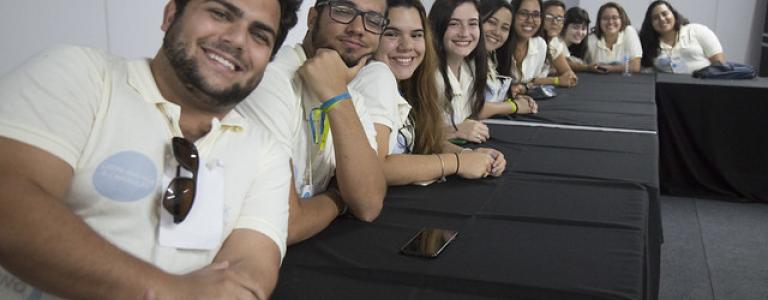Adaptation to Climate Change: Putting people first
When we talk about solving the climate crisis, we should have more than just a technical lens; we should also be talking about compassion, grief, fear and hope.
A version of this op-ed was originally published in Portuguese by “A Tarde” newspaper from Salvador, Brazil, on August 19, 2019. Reprinted with permission.
This week, people from all over Latin America are gathering at an event supported by the United Nations Framework Convention on Climate Change (UNFCCC) in Salvador, Brazil, to discuss—and hopefully act on—the climate crisis we are all experiencing, a crisis that increasingly defines our day-to-day lives as it threatens and destroys the delicate ecosystem we inhabit.
Two themes are emerging from the ongoing dialogue at this event.
First, our collective efforts to adapt to the effects of climate change are well-intentioned – but they aren’t happening fast enough.
At its simplest, adaptation means taking action to maintain or improve our current state of well-being in the face of new challenges to our natural surroundings. Examples of adaptation could include collecting rainwater when there is a water shortage, or forming neighbourhood groups to share knowledge and find solutions to collectively protect local elderly from higher temperatures.
Adaptation and mitigation (reducing greenhouse gas emissions) are what governments and people around the world are currently doing to try to control the climate crisis – both are important pursuits, but the pace of these projects and initiatives isn’t matching up with the pace of global warming.

Second, we must reimagine a new world for ourselves and future generations, understanding that it will be different than the one in which our parents and even our ancestors were raised. Climate change isn’t selective in who it punishes; it doesn’t see borders and it doesn’t favour one government over another. Its effects will affect everyone on the planet, and we must acknowledge that, at this point, there is no returning to “how things used to be.” That said, going forward will be difficult.
As we transition from our current state to this new future state, we must acknowledge the emotional aspect of this – the feelings of loss, guilt, or insecurity that might arise, but also the potential for freedom, new perspectives, and the excitement of being responsible for creating a new vision for how to be.
The process of making this new vision a reality will need to be collaborative but also confrontational, and undoubtedly messy – because despite the climate crisis being an unprecedented emergency, governments and corporations are largely responding as if it were a familiar challenge we’ve faced before that can be resolved with a few good inventions and improved technologies. Except it won’t. And this will soon become abundantly, uncomfortably clear.

One way we can make the transition a little less bumpy is by ensuring we are listening to the voices of young leaders with new ideas for how people can live more sustainably, and to indigenous communities where sustainability has already been woven into every aspect of living. These voices, in scientific circles, have thus far been considered “non-technical” (implying they are not knowledgeable) and hence unfit to contribute to shaping a new future, which has only hurt our progress.
The old model of addressing, and adapting to, the climate crisis has been about prioritizing tech-focused and engineering projects while silencing ideas that posit that the solution is equally dependent on humans behaving and interacting differently among ourselves and with the environment. The old system, which still reigns, has failed to produce a vision of a future that benefits the majority of people or ecosystems.
It is no surprise, then, that the adaptation actions resulting from this paradigm are often one-sided, driven by interests and knowledge foreign to the large majority of those inhabiting this planet. Today’s climate crisis reflects those institutional arrangements and the social and environmental injustices they promote.
Our planet demands deep-rooted change, and that requires everyone’s contributions. Knowledge has many faces and languages, not just those spoken by people and institutions in positions of power. When we talk about solving the climate crisis, we should have more than just a technical lens; we should also be talking about compassion, grief, fear and hope.
You might also be interested in
IISD Welcomes New Deal on Global Biodiversity Framework
IISD congratulates the Parties to the Convention on Biological Diversity (CBD) for adopting the Kunming-Montreal Global Biodiversity Framework, which will guide work within and outside the UN system on tackling biodiversity loss and help lay the groundwork towards the CBD’s vision of living in harmony with nature by 2050.
COP 29 Outcome Moves Needle on Finance
In the last hours of negotiations, concerted pressure from the most vulnerable developing countries resulted in an improved outcome on the finance target, with a decision to set a goal of at least USD 300 billion per year by 2035 for developing countries to advance their climate action.
What Is the NAP Assessment at COP 29, and Why Does It Matter?
At the 29th UN Climate Change Conference (COP 29) in Baku, countries will assess their progress in formulating and implementing their National Adaptation Plans. IISD’s adaptation experts Orville Grey and Jeffrey Qi explain what that means, and what’s at stake.
Toolkit for Monitoring, Evaluation, and Learning for National Adaptation Plan Processes
This toolkit provides practical guidance for the development and continuous improvement of MEL systems for national adaptation plan processes to government teams and practitioners working on adaptation.
